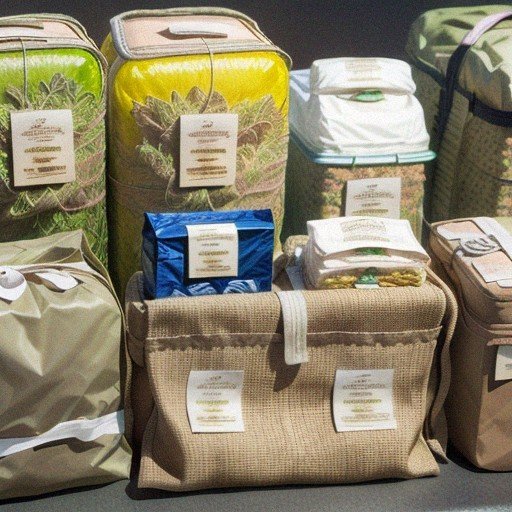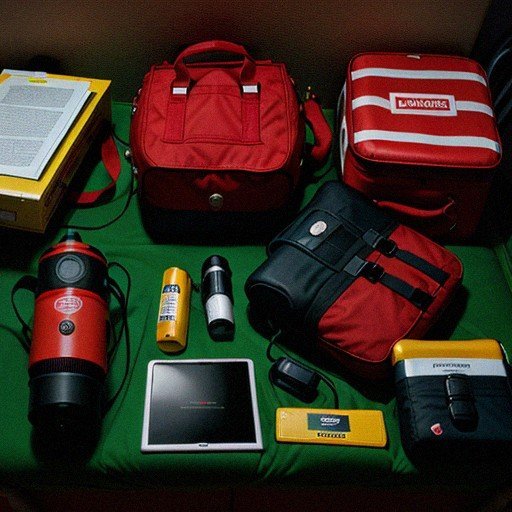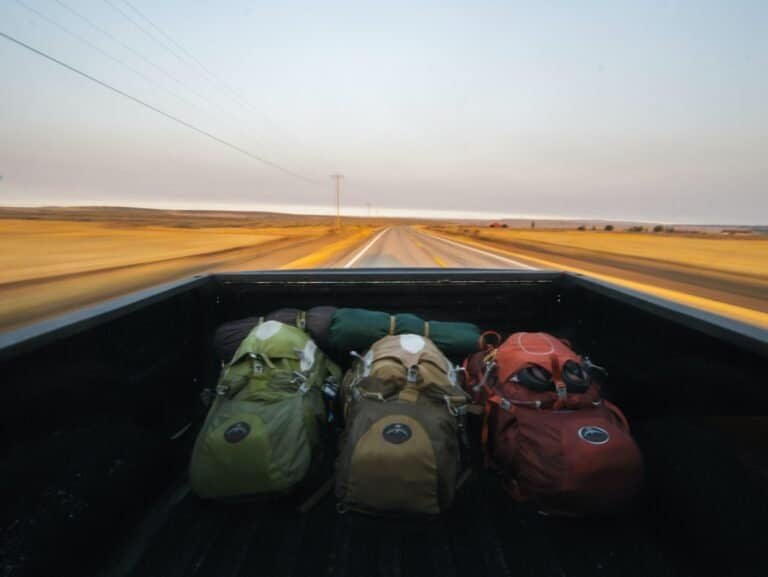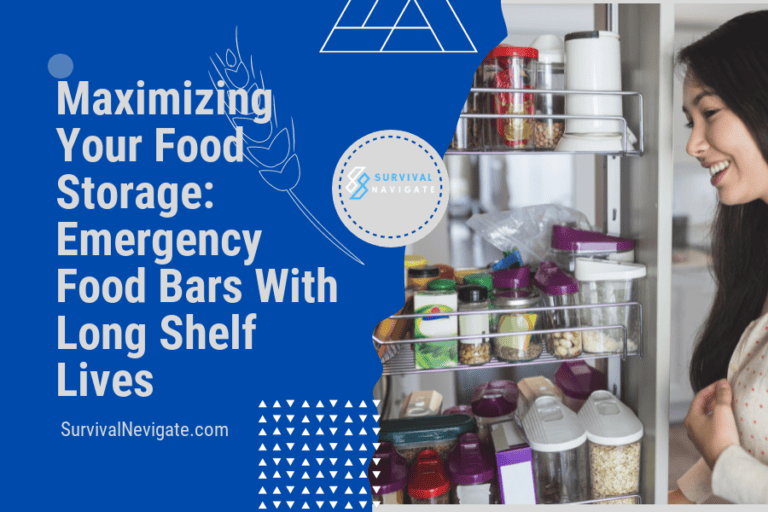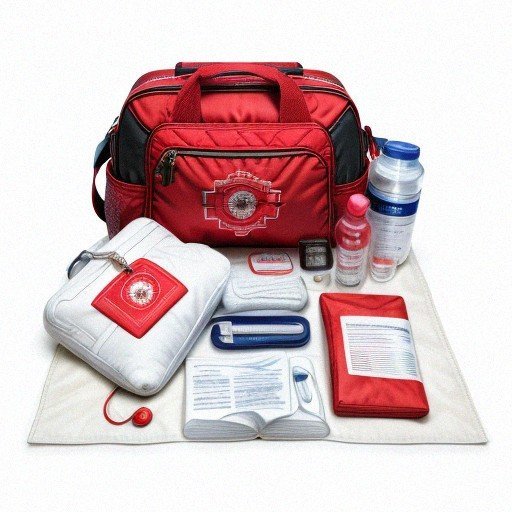The Essential Guide to 72 Hour Ration Packs: Ensuring Optimal Preparedness in Challenging Times
In times of unforeseen challenges and uncertain circumstances, having a well-stocked supply of essential items becomes vital to ensure optimal preparedness. And when it comes to emergency situations or prolonged periods without access to regular food sources, 72-hour ration packs emerge as an invaluable asset.
Designed to sustain individuals and families for three days with carefully selected provisions, these packs are the epitome of preparedness. In this comprehensive guide, we delve deep into the world of 72-hour ration packs, exploring their importance in challenging times and offering expert insight on how to choose the best options available in order to safeguard yourself and your loved ones against any potential disruptions that may lie ahead.

The Importance of 72-Hour Ration Packs in Emergency Preparedness
Emergency situations can strike unexpectedly, leaving us without access to essential resources. That’s where 72-hour ration packs come in – they provide a critical lifeline during challenging times.
- Peace of Mind: A 72-hour ration pack ensures that you and your loved ones have enough sustenance to survive for three days without access to food supplies. In emergencies, such as natural disasters or power outages, having these packs readily available eliminates the worry of finding immediate nourishment.
- Nutritional Balance: These packs are designed with careful consideration of nutrition requirements to provide a balance of calories, vitamins, and minerals needed for optimal health during crises. Each meal is portioned appropriately and includes non-perishable items that can be safely stored for long periods.
- Convenience and Portability: Lightweight and compact, 72-hour ration packs are easy to carry wherever you need them most – whether it’s a shelter or when evacuating an area under threat from fires or flooding. Their design enables quick distribution among affected individuals without hampering emergency response efforts.
Preparing for unexpected events is crucial in today’s uncertain world. With their peace of mind, nutritional benefits, convenience, and portability factors considered, incorporating 72-hour ration packs into your emergency preparedness plans should be a top priority.
Understanding the Contents: What to Expect in a Typical Ration Pack
- Variety of Food: A typical ration pack includes a diverse assortment of food items to provide sustenance during challenging times. These packs often include pre-packaged meals, energy bars, canned food, and dehydrated fruits.
- Essential Nutrients: Ration packs are designed to provide essential nutrients needed for survival. They typically contain high-protein foods like meat jerky or protein bars, as well as carbohydrates such as rice or pasta. Some packs also include vitamins and minerals in the form of tablets or powders.
- Beverages: In addition to solid food, ration packs will usually include drink options like powdered milk or fruit-flavored drinks. These beverages help keep individuals hydrated while providing additional nutrients.
- Ready-to-Eat Meals: Many ration packs come with ready-to-eat meals that can be consumed without any cooking or preparation. These meals often come packaged in sealed pouches and can be eaten straight from the bag if necessary.
- Compact Packaging: Ration packs are designed to be lightweight and compact for easy transportation and storage. The individual components are typically vacuum-sealed or packed in small foil pouches to extend shelf life while minimizing size.
- Long Shelf Life: To ensure optimal preparedness, 72-hour ration packs have a long shelf life ranging from months to years. This extended lifespan allows them to be stored safely until needed during emergencies.
By understanding the contents of a typical ration pack, individuals can ensure they have everything they need for optimal preparedness during challenging times. From a variety of food options to essential nutrients and ready-to-eat meals, these packs offer both sustenance and convenience when access to traditional food sources may not be available. With their compact packaging and long shelf life, ration packs provide peace of mind knowing that emergency provisions are readily accessible when needed most.

Choosing the Right Ration Pack: Factors to Consider
Factors to Consider When Choosing a Ration Pack
When selecting a 72-hour ration pack, there are several key factors to consider. These elements will help ensure that the pack meets your specific needs and provides you with optimal sustenance during challenging times.
- Caloric Content: Pay attention to the caloric content of the ration pack. It should provide enough energy for three days without compromising nutrition. Aim for packs that contain around 2,500-3,000 calories per day.
- Dietary Restrictions: If you have any dietary restrictions or allergies, make sure to choose a ration pack that accommodates your needs. Look for options labeled as gluten-free, lactose-free, or suitable for vegetarians/vegans.
- Variety and Taste: While it may not be possible to replicate gourmet meals in an emergency situation, choosing packs with a variety of food items can help boost morale and prevent food fatigue over three days. Comfort foods like chocolate bars or pre-packaged drink mixes could also satisfy cravings while providing necessary nutrients.
- Longevity and Storage: Look for ration packs with long shelf lives and packaging designed specifically for extended storage conditions. As certain environments may affect product quality, such as extreme temperatures, the durability of these packs becomes essential.
Storing and Rotating Ration Packs: Best Practices for Long-Term Readiness
When it comes to storing ration packs for long-term readiness, there are a few best practices to keep in mind.
- Keep it cool and dry: It is crucial to store your ration packs in a cool and dry environment. This helps prolong their shelf life and prevents any potential spoilage or deterioration.
- Rotate your stock: To ensure optimal preparedness, it is essential to rotate your ration packs regularly. By using the ‘first-in, first-out’ method, you can avoid having expired or stale items in your pack when you need them most.
- Regularly check for damage: Inspecting your ration packs periodically will help identify any signs of damage or tampering that could affect their quality or safety.
Meal Planning with Ration Packs: Ensuring Proper Nutrition in Crisis Situations
When it comes to meal planning with 72-hour ration packs, ensuring proper nutrition is essential for individuals facing crisis situations. Here are some key tips to keep in mind:
- Balance the macronutrients: A well-balanced diet includes a mix of carbohydrates, proteins, and fats. Look for ration packs that provide an adequate amount of each nutrient to meet your body’s needs.
- Include fruits and vegetables: While fresh produce may not be available during a crisis, seek out ration packs that offer dehydrated or freeze-dried fruits and vegetables. These can provide necessary vitamins and minerals.
- Stay hydrated: Water is crucial for survival, so choose ration packs that include water purification tablets or packets. It’s important to drink enough fluids throughout the day.
- Avoid excess sodium: Some sources of food during emergencies tend to be high in sodium levels due to their long shelf life properties. Take note of the sodium content in ration packs and try to balance it with other low-sodium options.
- Plan for dietary restrictions: If you have specific dietary restrictions such as allergies or special diets like vegetarianism or gluten-free, opt for ration packs that accommodate these needs.
Alternative Uses for Ration Pack Contents: Thinking Outside the Box
1. Emergency First Aid Kit:
- Repurpose the plastic bag as an improvised tourniquet or bandage.
- The water purification tablets can be used to disinfect wounds.
- Use the matches to sterilize needles or tweezers.
- Wrapping medical supplies in aluminum foil from ration pack wrappers helps keep them sterile.
2. Signal for Help:
- Reflective material from ration pack packaging can serve as a makeshift signal mirror to attract attention.
- Attach glow sticks to empty water bottles and toss them into trees at night for increased visibility.
3. Tools and Equipment:
- Plastic utensils can be shaped into hooks or fishing lures with heat from fire matches, providing a means of catching food in survival situations.
- Use chewing gum wrappers with their thin metallic layer folded up inside out to create flame-resistant kindling when starting fires.
By creatively repurposing ration pack contents, you can maximize your preparedness during challenging times without relying solely on traditional uses.
DIY Ration Packs: How to Create Your Own Emergency Food Supply
- Start by selecting non-perishable food items that are rich in nutrients and can last a long time, such as canned goods, dried fruits, nuts, and protein bars.
- Calculate the required calorie intake per day for each person in your household to determine how much food you’ll need. On average, an adult needs about 2,000 calories per day.
- Remember to choose foods that do not require cooking or refrigeration since you might not have access to electricity during emergencies.
Packaging and Storage Tips
- Use resealable plastic bags or airtight containers to avoid spoilage and maintain freshness.
- Label each ration pack with the contents and expiration date so it’s easy to keep track of what you have on hand.
By following these simple steps, you can ensure that you have enough emergency food supplies for at least 72 hours. Regularly check your stockpile for expiry dates and replace any items nearing their expiration. It’s better to be prepared ahead of time than find yourself scrambling during challenging situations.
Ration Pack Reviews: Comparing the Best Options on the Market
When it comes to preparing for challenging times, having a reliable 72-hour ration pack is crucial. We’ve compared some of the best options available to help you make an informed decision:
- Ready-to-Eat (RTE) Meals: These compact and lightweight meals come pre-cooked and require no additional water or heating. They usually include main courses, sides, snacks, and desserts. The advantage of RTE meals is their simplicity and convenience.
- MREs (Meals Ready-to-Eat): MREs are designed specifically for military use but have gained popularity among civilians as well. Each MRE contains a complete meal with an entrée, side dishes, dessert, bread, spread packets, powdered beverages like coffee or tea, and even condiments. They often include flameless heaters to warm up your meal.
- Dehydrated Food Kits: Dehydrated food kits are lightweight and easy to store due to their extended shelf life. Just add hot water into the pouches containing dehydrated soup mixes or freeze-dried entrees for quick sustenance during emergencies.
Ultimately, choosing the right ration pack depends on personal preferences such as taste preferences and dietary restrictions.

